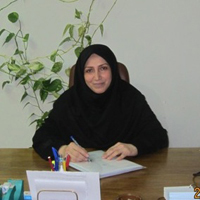Analysis of Economic and Industrial Development Plans from Spatial-Economic Synergy Perspective put an account of the Tehran Metropolitan Region
In the past decades, development strategies have transformed. By way of explanation, what is known as a comparative advantage has been diminished, in reverse dynamic comparative and competitive advantages, and in the last decade, collaborative advantage has risen. At the micro-level, the collaborative advantage can reduce risk by enhancing productivity-improving profit performance, and competitive advantages, decreasing the cost of transportation and sharing access to complementary resources over time. At the regional level, it invokes cooperative infrastructure investment by joining cities’ different resources and advantages. This advantage has been raised because of its significance in the supply and value chains. Collaborative benefits of the supply chain are accomplished relative to competitors by using participation processes to empower participants to build knowledge. Meanwhile, collaborative advantages can create a synergy that the independent action of the participants never achieves such advantages. Economic synergy has entered the development debate and has become the agenda of strategists concerning economic activities, including micro-level(firm), middle-level (network, intra-regional relations), and macro-level(national).
The methodology of this research is mixed. The analysis method in the qualitative section includes a content analysis of cultural, social, and economic development programs and industrial development plans. Accordingly, industries that emphasize upcoming documents in the Tehran metropolitan region from a spatial-economic synergistic index perspective are evaluated. Additionally, approaches and policies in these plans are appraised. In the quantitative section of the methodology, we identified the industries with the most significant potential for creating economic synergy. Then, research indicators were extracted based on the background and theoretical foundations. Furthermore, the input-output table was used to analyze intra-industry relations. Finally, this research proposes a spatial structure and institutional framework for improving and supporting economic activities in the Tehran metropolitan region.
Industry development in Tehran metropolitan region has been impacted by the independent economic policy, the dominance of neoclassical economic thinking, and the import substitution industrialization approaches. So, cooperative advantages have been neglected for decades. Based on statistics from the Ministry of Mining Industry and Trade (MMIT)Share of the number of firms is about 26درصد, and 36درصد is the share of employment. Also, 200 firms add to the region on average annually. Despite these potentials, the amount of value-added produced by the region has a downward trend and has reached 25 percent. The most important factors, such as production capacity development with little regard for extra-regional relations and similarity of production capacity expansion, probably led to a decrease in value-added and share of GDP in the region. Therefore, this situation is direct to work similarity, destructive competitive process and finally many industries have faced issues as a result. Establishing 17 towns and industrial areas and investigating good flows among these indicate the weak functions of economic nodes in the field of location and expanding synergistic relationships. Furthermore, an investigation of industrial development policy-making trends shows that supporting all of the industry and neglecting product life cycle has played a critical role in this way. Significantly, the comprehensive supporting policy led to a lack of competitiveness in the long term. Moreover, the lack of appropriate cognation of global markets prevents the identification of strategic industries, so productions of the industry have lost competitiveness and consumer markets due to the increased production costs and reduced quality of them. The branding process for the industry has never been taken seriously. Meanwhile, an influential economic factor of intra-region has been indistinct for the expansion of the industry. In other words, approaches that are known in the literature as offset should be based on an expansion of industries in the region.
The research results indicate that though the expansion of some crucial industries in plans has been neglected, a major focus on developing 11 industries has been increased. Some industries like printing and publishing leather and its products and medical instruments have been overlooked in these plans. Additionally, the strategic plan of the Ministry of Industry and Mine is not able to establish key industries due to considering some limited indicators alone. Therefore, this research offers spatial economic concepts as an essential factor that can effectively impact economic development. The investigation of the industry situation in terms of Enterprises number and employment rate shows that a substantial number of firms are classified into three categories, including small and mid-size enterprises. Thus, economic development strategy needs to be towards creating synergy among industries. Finally, If the industries’ enterprises have been developed as clustering, it would generate synergy through value chain formation.
- حق عضویت دریافتی صرف حمایت از نشریات عضو و نگهداری، تکمیل و توسعه مگیران میشود.
- پرداخت حق اشتراک و دانلود مقالات اجازه بازنشر آن در سایر رسانههای چاپی و دیجیتال را به کاربر نمیدهد.


